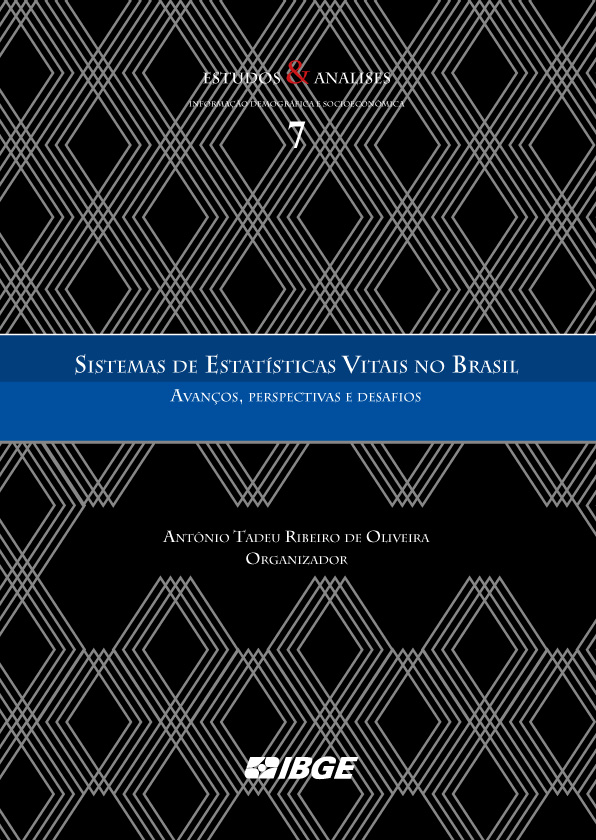Vital Statistics
Book discusses reconciliation between IBGE and Ministry of Health data
May 25, 2018 10h00 AM | Last Updated: June 05, 2018 10h36 AM
The IBGE launches today the "Systems of Vital Statistics in Brazil: advances, perspectives and challenges" publication, a discussion on methods of reconciling the Civil Registry Statistics with the administrative records of the Ministry of Health. The publication can be purchased at the IBGE´s virtual shop. The file can be downloaded for free in PDF format at the IBGE´s digital library.
Organized by Antônio Tadeu Ribeiro de Oliveira, the book brings three articles signed by Luiz Fernando Lima Costa, José Eduardo de Oliveira Trindade and the organizer himself, all of them part of the IBGE´s Coordination of Population and Social Indicators.

Cover of the "Systems of Vital Statistics in Brazil: advances, perspectives and challenges" publication
The publication was designed to subsidize the discussions on the cooperation between the IBGE and the Ministry of Health, aiming at the reconciliation of the two databases, as recommended by the United Nations to foster a robust national system of vital statistics.
"What we are doing with this publication is to qualify the information on vital statistics in Brazil, not only increasing the overage, but also the quality", explained Antônio Tadeu Ribeiro de Oliveira, who organized the book. "We want to integrate the two databases with these objectives in mind", adds him.
In the first article, the organizer shows an overview of vital statistics in Brazil. In the two subsequent articles, the organizer, Luiz Fernando Lima Costa and José Eduardo de Oliveira Trindade describe the studies carried out under the scope of the partnership between the IBGE´s Coordination of Population and Social Indicators and the Ministry of Health´s Secretariat of Health Surveillance.
While the second article deals with pairing of the databases, its methodology and gray areas in each system, the last article discusses methodologies of estimate of births and deaths, focusing on the deterministic and log-linear methods, as well as on the computation of the respective under-registrations and underreportings.
IBGE and Ministry of Health
The IBGE is responsible for collecting information on live births, marriages, deaths and fetal deaths reported by the Civil Registry Offices of Natural Persons since 1974. This whole set of information plus the information on the divorces reported by Family Courts, Forums, Civil Courts and Notary Public Offices, added in 1984, comprise the Statistics of Civil Registry, annually released by the IBGE. In the meantime, the Ministry of Health maintains the System of Live Births - SINASC and the System of Mortality - SIM, respectively developed in 1975 and 1990 and fed with administrative records from the government.
Among the objectives of the reconciliation, the qualification of the collected data, standardization of concepts and improvement of the information provided by both sources look for addressing the purposes of the socio-demographic studies and fostering the Brazilian public policies, particularly those of epidemiological nature.




















